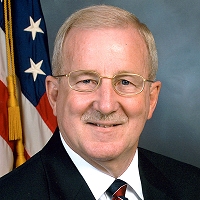The IHS mission is to raise the physical, mental, social, and spiritual health status of the American Indian and Alaska Native people to the highest possible level. That includes doing our part to preserve the environment.
Today, you can’t walk down the street without some indication that environmental protection is here to stay: separate bins for trash and recyclables, bike lanes and bike share programs, hybrids and EVs, organic or locally grown food in restaurants and markets, sustainably-made apparel and other goods, LEED certified buildings, etc. Governments, nonprofits, and businesses have collaborated to establish policies curbing climate change, fighting species’ extinction, and ensuring access to clean water.

For IHS, that means implementing sustainable practices into standard agency operations and energy and water conservation measures in facilities nationwide. For example, a retrofit at the Feather River Tribal Health Clinic will install 1,697 LED lighting fixtures to reduce the facility’s electricity use by approximately 38 percent (an estimated 266,304 kWh per year). The Fort Yuma Health Center will incorporate a rooftop and parking photovoltaic system that will provide half of the facility’s total energy needs. Water use is minimized with Xeriscape techniques to reduce or eliminate the need for irrigation, by planting indigenous species that are compatible with the local climate. The rainwater recovery system at the Kayenta Health Center includes underground holding tanks that store the captured rainwater to be used for irrigation. For more examples, see the Sustainability in Action webpage.
Let’s determine what else we can do to have a positive impact on the environment. Let's change one aspect of our lifestyle, whether it’s biking to work instead of driving, using reusable shopping bags and water bottles. For ideas on how you can do your part, see What Can I Do. The Sustainability Program also posts bi-monthly Green Tips. If you’re already doing your part, keep on, and encourage others to do more.
Let’s make every day Earth Day.
Gary J. Hartz, P.E. is the IHS chief sustainability officer. He leads IHS efforts to provide functional, well maintained health care facilities and staff quarters, technical and financial assistance to tribes on safe water and wastewater systems and a broad range of environmental health and injury prevention activities.



